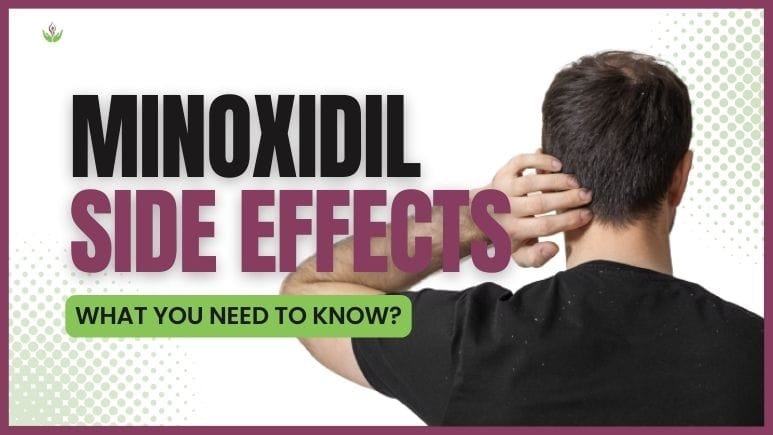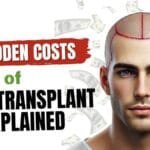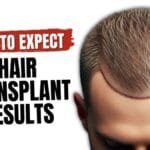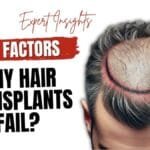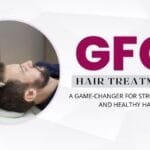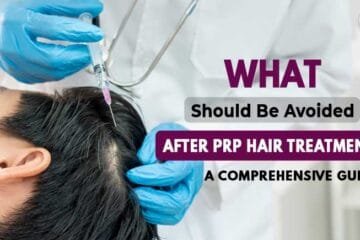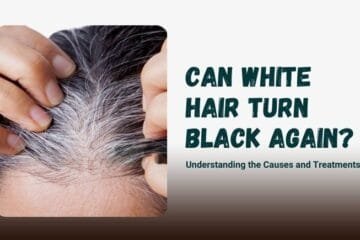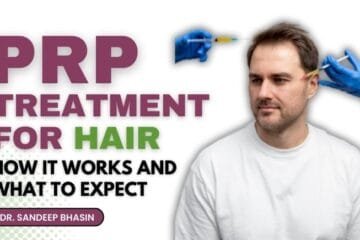Overview
A drug called minoxidil is used to treat hair loss and encourage hair growth. It was initially created as an oral drug to treat high blood pressure, but it was later discovered to have effects on hair growth as a side effect. We will discuss minoxidil’s definition, mechanism of action, and potential side effects in this article. Additionally, we’ll go over who should use minoxidil, how to do so safely, and possible substitutes. You will know more about minoxidil and what you need to know before using it by the time this article is over.
What is Minoxidil?
Minoxidil is a medication that is used to treat hair loss and is available in both topical and oral forms. Minoxidil was initially created as an oral medication to lower blood pressure, but it was later discovered to have the unexpected side effect of promoting hair growth. It has been used as a hair loss treatment ever since and has been around for more than 30 years.
History and Development of Minoxidil:
Minoxidil was initially created as a drug to treat high blood pressure in the 1960s. It was found that some patients experienced an increase in hair growth, especially on the scalp. Topical minoxidil formulations were created in the 1970s specifically to treat hair loss.
Men with androgenetic alopecia (male pattern baldness) may use Minoxidil, which was approved for this purpose by the US Food and Drug Administration (FDA) in 1988. It was authorized in 1991 for the treatment of female androgenetic alopecia. Today, Minoxidil is offered as an oral prescription drug as well as an over-the-counter topical solution or foam.
How it Works to Stimulate Hair Growth:
Thoughts are still being held about the precise mechanism by which minoxidil encourages hair growth. Widening the blood vessels in the scalp is thought to increase blood flow to the hair follicles, which is how it is thought to work. The hair follicles receive more nutrients and oxygen thanks to the increased blood flow, which may encourage hair growth.
Minoxidil may also stimulate the hair follicles to produce thicker hair shafts, extending the anagen (growth) phase of the hair cycle. Additionally, it might have anti-inflammatory effects on the scalp, which could lessen irritation and inflammation that might cause hair loss.
Although minoxidil can be useful for accelerating hair growth, it’s important to be aware of any possible risks and side effects, which will be covered in the sections below.
Common Minoxidil Side Effects
Minoxidil is generally considered a safe and effective treatment for hair loss, but like any medication, it can have side effects. Here are some of the most common side effects associated with the use of minoxidil:
- Scalp irritation: It is not uncommon to experience some degree of scalp irritation, itching, or redness when using Minoxidil. This is typically a mild and temporary side effect that goes away on its own after a few weeks of use. Using a gentle, fragrance-free shampoo and avoiding excessive heat styling can help minimize scalp irritation.
- Dryness: Minoxidil can sometimes cause dryness or flaking of the scalp. This can be especially problematic for people with dry or sensitive skin. Using a moisturizing shampoo and conditioner and avoiding harsh chemicals and heat styling can help prevent dryness.
- Dizziness: Some people may experience dizziness or lightheadedness when using Minoxidil. This is typically a mild and temporary side effect that goes away on its own after a few weeks of use. If you experience severe dizziness or fainting, seek medical attention immediately.
- Increased hair loss: In some cases, minoxidil may cause temporary hair shedding, which is also known as “dread shed.” This is usually a sign that the medication is working and should resolve on its own after a few weeks.
Possible reasons for experiencing side effects:
Some people may experience side effects when using Minoxidil due to a variety of reasons, such as:
- Using too much Minoxidil: Using more than the recommended dose of Minoxidil can increase the risk of side effects.
- Allergic reactions: Some people may have an allergic reaction to minoxidil, which can cause itching, hives, and other symptoms.
- Incompatibility with other products: Using Minoxidil in combination with certain hair care products, such as those containing sulfates, can cause scalp irritation and dryness.
How to minimize the effects:
Here are some suggestions for reducing Minoxidil side effects:
- Use Minoxidil as directed: stick to the recommended dose and apply it only to the scalp.
- Use a gentle shampoo: Avoid using harsh shampoos or styling products that can cause scalp irritation and dryness.
- Moisturize your scalp: Use a moisturizing conditioner or treatment to help soothe and hydrate the scalp.
- Talk to your doctor: If you experience severe or persistent side effects, talk to your doctor about adjusting the dose or switching to a different treatment.
Don’t Miss Out on GFC’s Hair Nourishing Solutions – Click Now.
Serious Minoxidil Side Effects
While rare, serious side effects can occur with the use of minoxidil. These side effects can include:
- Chest pain
- Rapid heartbeat or heart palpitations
- Difficulty breathing
- Swelling of the face, tongue, or throat
- Fainting or lightheadedness
- Scalp irritation that worsens or does not go away
You should seek medical help right away if you experience any of these serious side effects. These adverse reactions may be symptoms of a severe allergic reaction or another serious medical condition.
It is significant to note that only a small minority of people who use Minoxidil experience these severe side effects. Even so, it’s crucial to be aware of the dangers and to get help from a doctor if you experience any symptoms.
Minoxidil and Hair Loss
Minoxidil is a popular treatment for hair loss, but some people may worry that it can actually cause hair loss or excessive shedding. Let’s take a closer look at this topic.
Can minoxidil cause hair loss?
No, it is not known that minoxidil causes hair loss. In fact, it was created specifically to encourage hair growth. However, when using minoxidil for the first time, some individuals may experience hair shedding.
The link between minoxidil and hair shedding
When starting a minoxidil treatment, hair loss is a common occurrence. This is due to the fact that minoxidil stimulates hair follicles, which may result in the shedding of old hair and the growth of new hair in its place. After beginning treatment, this shedding should stop within a few weeks because it is typically brief. It’s important to remember that shedding is a natural part of the hair growth cycle and that even people who are not using minoxidil can experience some shedding.
How do you tell if hair shedding is normal or a cause for concern?
It is normal to experience some shedding when starting minoxidil treatment. However, if you notice excessive shedding or if shedding continues for more than a few weeks, you should consult your doctor. You might need to change your dosage or choose a different hair loss medication. You should also call your doctor if you experience any additional symptoms, such as scalp itching or modifications in your hair’s texture or color.
Minoxidil and Blood Pressure
Minoxidil is primarily used as a blood pressure medication, and its hair growth properties were discovered as a side effect. Here’s what you need to know about minoxidil and blood pressure:
- Overview of how minoxidil affects blood pressure: Minoxidil is a vasodilator, which means it works by widening the blood vessels and increasing blood flow. This can help lower blood pressure in people with hypertension.
- Potential risks for those with existing heart conditions: While minoxidil can be effective in lowering blood pressure, it can also put a strain on the heart. People with a history of heart disease or other cardiovascular problems should speak to their doctor before using Minoxidil.
- How to monitor blood pressure while using Minoxidil: If your doctor prescribes Minoxidil for blood pressure control, they will likely recommend regular blood pressure monitoring to ensure that it is working effectively and not causing any adverse effects. Be sure to follow your doctor’s instructions and keep track of your blood pressure readings.
Minoxidil and pregnancy
Minoxidil use during pregnancy is a topic that requires careful consideration, as there is limited information on the safety of the medication for pregnant women. Here’s what you need to know:
Potential risks for pregnant women using Minoxidil:
- Minoxidil has not been extensively studied in pregnant women, and its effects on fetal development are not yet fully understood.
- Animal studies have shown that high doses of minoxidil can cause fetal abnormalities and developmental delays.
How to safely use Minoxidil during pregnancy:
- If you are pregnant or planning to become pregnant, it is important to discuss your options with your healthcare provider.
- In general, minoxidil is not recommended for use during pregnancy unless the potential benefits outweigh the potential risks.
- If you are currently using Minoxidil and become pregnant, talk to your doctor right away to determine the best course of action.
Alternatives for hair loss treatment during pregnancy:
- If you are experiencing hair loss during pregnancy, there are alternative treatments that may be safer for you and your baby.
- Some options include switching to a gentle, sulfate-free shampoo, incorporating scalp massage into your routine, and taking prenatal vitamins to support healthy hair growth.
- It is important to talk to your healthcare provider before starting any new treatments during pregnancy.
In conclusion, using minoxidil while pregnant should be done with caution, it may be a safe and effective treatment for hair loss in some people. It’s important to talk through your options with your doctor and look into alternative therapies that might be safer for you and your growing child.
How to Use Minoxidil Safely?
Minoxidil can be an effective hair loss treatment, but it’s important to use it safely to avoid potential side effects. Here are some guidelines for using minoxidil safely:
Dosage instructions and recommended usage:
- Minoxidil is typically applied topically to the scalp twice a day, using a dropper or spray applicator.
- The amount of minoxidil used depends on the strength of the solution, with 5% being the most commonly used.
- It’s important to follow the instructions on the product label carefully and not exceed the recommended dosage.
Tips for minimizing side effects:
- To minimize the risk of scalp irritation, apply Minoxidil to a clean, dry scalp and avoid washing your hair for at least four hours after application.
- Use a gentle, sulfate-free shampoo to avoid further scalp irritation.
- If you experience itching or irritation, try reducing the frequency of the Minoxidil application or using a lower-strength solution.
- If you experience dizziness or lightheadedness, try lying down for a few minutes after applying Minoxidil to reduce the risk of fainting.
Precautions to take when using Minoxidil:
- Avoid getting Minoxidil in your eyes, mouth, or nose, as it can cause irritation.
- If you accidentally get Minoxidil in your eyes, rinse them with water immediately.
- If you have a history of heart disease, high blood pressure, or kidney disease, talk to your doctor before using Minoxidil.
- If you experience chest pain, a rapid heartbeat, or difficulty breathing, seek medical attention immediately.
You can use minoxidil to promote hair growth safely and successfully by adhering to these recommendations.
Who Should Use Minoxidil?
Men and women can effectively encourage hair growth with minoxidil, a common hair loss treatment. However, not everyone is a good candidate for using minoxidil. People who are thinking about using minoxidil should talk to their doctor to see if the treatment is right for them.
Good candidates for using minoxidil include:
- Individuals experiencing hair loss or thinning hair
- Those who have a family history of hair loss
- People with androgenetic alopecia, which is the most common form of hair loss,
On the other hand, individuals with certain conditions may not be good candidates for using Minoxidil, including:
- Those with scalp conditions such as psoriasis or eczema
- Individuals with low blood pressure or who are taking medication to lower their blood pressure
- People with heart problems or who have had a heart attack or stroke in the past
It’s important to understand that minoxidil isn’t a solution for hair loss and might not work for everyone. It’s crucial to consult a doctor before beginning any hair loss treatment in order to identify the underlying cause of hair loss and go over the best course of action.
What to Do If You Experience Side Effects?
You should take the necessary action to address any side effects you encounter while using minoxidil. Here are some general guidelines:
For common side effects:
- If you experience scalp irritation or dryness, try using a gentle, sulfate-free shampoo and conditioner.
- If you experience itching or flaking, try using a medicated shampoo or topical steroid cream.
- If you experience dizziness, avoid standing up too quickly and consider lying down until the symptoms pass.
- If you experience any other common side effects, try reducing the dosage or frequency of Minoxidil use.
For serious side effects:
- If you experience chest pain, difficulty breathing, or any other serious side effect, seek medical attention immediately.
- If you believe that you are having an allergic reaction, such as hives or swelling of the face, lips, or tongue, seek emergency medical attention right away.
It is important to always follow the dosage instructions provided by your healthcare provider and to monitor your body for any signs of side effects. If you experience any concerning symptoms, do not hesitate to seek medical attention.
Minoxidil Alternatives
Minoxidil is not the only option for treating hair loss. There are other treatments available, each with its own set of pros and cons. Here are some common alternatives to minoxidil:
- Finasteride: This is a prescription medication that is taken orally. It works by blocking the production of a hormone called DHT, which is responsible for male-pattern baldness. Finasteride is effective for treating hair loss in men, but it is not recommended for women.
Pros: Effective for treating male pattern baldness; easy to take.
Cons: Not recommended for women; potential side effects include decreased libido and erectile dysfunction.
- Natural remedies: There are a variety of natural remedies that are said to promote hair growth, such as coconut oil, onion juice, and aloe vera.
Pros: generally safe and inexpensive.
Cons: Limited scientific evidence to support effectiveness may not work for everyone.
- Hair transplant surgery: This involves taking hair from one part of the scalp and transplanting it to another area that is experiencing hair loss.
Pros: It can provide a permanent solution to hair loss with natural-looking results.
Cons: Expensive, requires surgery, potential for scarring and infection.
When to consider switching from Minoxidil to another treatment:
- If you are experiencing side effects that are difficult to manage,
- If Minoxidil is not effective in treating your hair loss,
- If you are looking for a more permanent solution to hair loss,
Conclusion:
In conclusion, minoxidil is an effective hair loss treatment that is widely used. It’s critical to use the medication safely and in accordance with directions, while also being aware of any potential side effects. Be sure to discuss any side effects with your doctor if you experience any. Additionally, if Minoxidil doesn’t work for you or if you experience side effects, talk to your doctor about other hair loss treatments if you’re interested.
FAQ:
Yes, minoxidil can be used for hair loss in women. In fact, there is a specific formulation of Minoxidil approved by the FDA for use in women.
It can take several months for minoxidil to produce visible results. Most people start to see improvement after 4-6 months of consistent use.
Yes, minoxidil is commonly used for hair loss in men. It is available over-the-counter and can be purchased in strengths of 2% and 5%.
If you stop using Minoxidil, any hair that has grown as a result of the medication will eventually fall out. It is important to continue using the medication as directed to maintain its benefits.
While minoxidil is most commonly used for hair loss on the scalp, it can be used on other areas of the body as well. However, it is important to use caution and follow the instructions carefully, as it may cause irritation.
The long-term safety of minoxidil is not well established. While it is generally considered safe for long-term use, there may be potential risks associated with extended use.
Minoxidil is not recommended for use in children under the age of 18, as there is limited research on its safety and effectiveness in this age group.
Chemotherapy-related hair loss cannot be treated with medication because the hair follicles are damaged, so minoxidil is ineffective in treating it.
Minoxidil can be used in combination with other hair loss treatments, such as finasteride, for enhanced results. However, it is important to consult with a healthcare professional before combining treatments.
When it comes to hereditary androgenetic alopecia-related hair loss, minoxidil works best. It may be less effective for other types of hair loss, such as hair loss due to medication side effects or autoimmune disorders.
References:
- Lee SW, Juhasz M, Mobasher P, Ekelem C, Mesinkovska NA. A Systematic Review of Topical Finasteride in the Treatment of Androgenetic Alopecia in Men and Women. J Drugs Dermatol. 2020;19(4):377-384. PMID: 32306719.
- American Hair Loss Association. Men’s Hair Loss: Introduction. https://www.americanhairloss.org/men_hair_loss/introduction.html

